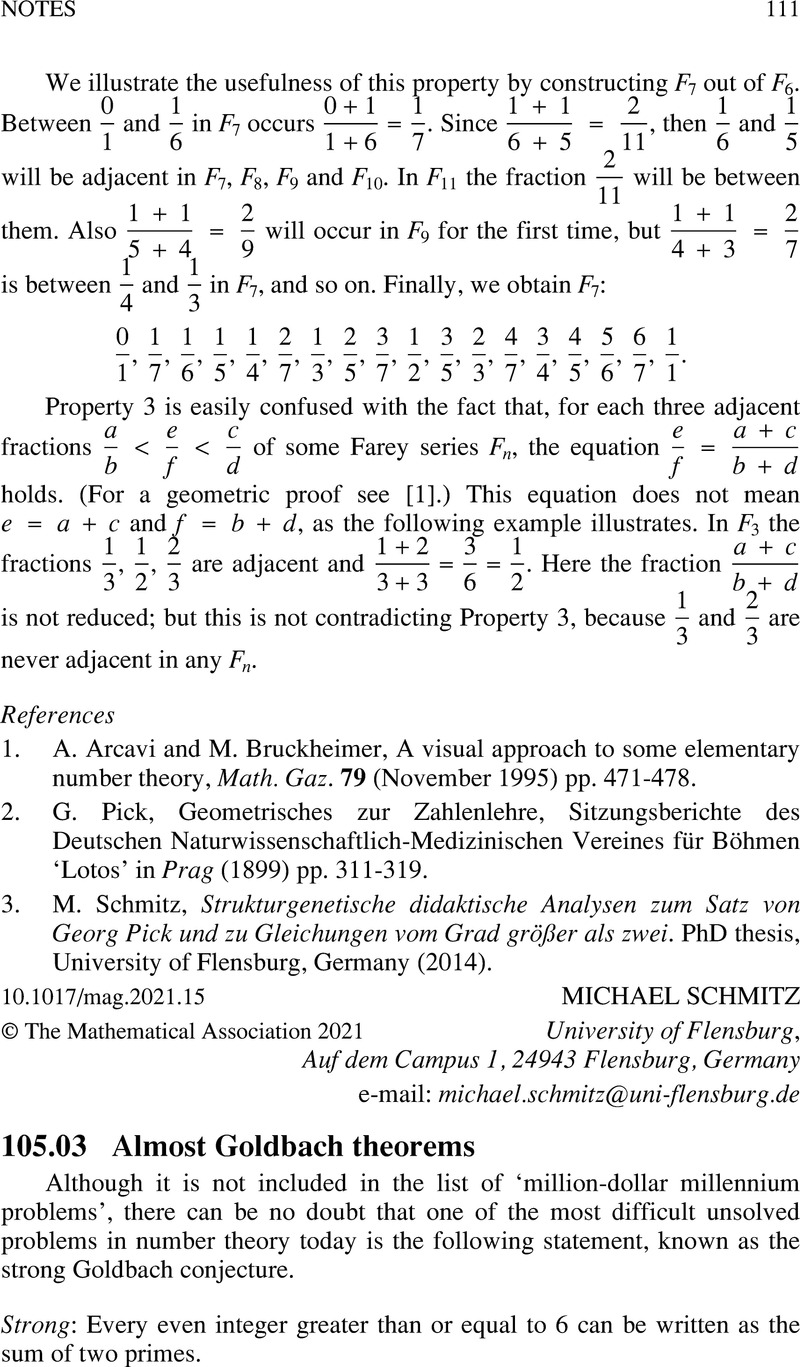No CrossRef data available.
Article contents
105.03 Almost Goldbach theorems
Published online by Cambridge University Press: 17 February 2021
Abstract
An abstract is not available for this content so a preview has been provided. Please use the Get access link above for information on how to access this content.

Information
- Type
- Notes
- Information
- Copyright
- © The Mathematical Association 2021
References
Hardy, G. H. and Littlewood, J. E., A further contribution to the study of Goldbach's problem, Proc. London Math. Soc. 22 (1923) pp. 46–56.Google Scholar
Vinogradov, I. M., Representation of an odd number as a sum of three primes, Dokl.Akad.Nauk SSSR 15 (1937) pp. 291–294.Google Scholar
Liu, Ming-Chit and Wang, Tian-Ze, On the Vinogradov bound in the three prime Goldbach conjecture, Acta. Arith. 105 (2002) pp. 133–175.CrossRefGoogle Scholar
Helfgott, H. A., The ternary Goldbach conjecture is true, arXiv:1312.7748v2[math.NT] 17 January 2014.Google Scholar
Brun, V., Le crible d'Érastosthéne et le théoreme de Goldbach, Skr. Norske VId, Akad, Kristiania, I; 3 (1920) pp. 1–36.Google Scholar
Wang, Yuan, On the representation of a large even integer as a sum of a product of at most three primes and a product of at most four primes, Acta Math, Sinica, 6 (1956) pp. 500–513.Google Scholar
Wang, Yuan, On the representation of a large even integer as a sum of a prime and a product of at most 4 primes, Acta Math. Sinica 6 (1956) pp. 565–582.Google Scholar
Schnirelmann, L. G., Uber additive Eigenschaften von Zahlen, Izv. Donck. Polytech. Inst. 14 (1930) pp. 3–28.Google Scholar
Romanov, N. P., On the Goldbach problem, Izv. NEE Mat. and Tech. Univ. Tomsk 1 (1935) pp. 34–38.Google Scholar
Ricci, G., Su la congettura di Goldbach e la constante di Schnirelmann; (I) Ann. Scuola Norm. Sup. Pisa (2), 6 (1937) pp. 71-90 (II): ibid 6 (1937) pp. 91-116.Google Scholar
Vaughan, R. C., A note on Schnirelmann's approach to Goldbach's problem, Bull. London Math. Soc. 8 (1976) pp. 245–250.CrossRefGoogle Scholar
Linnik, Y. V., Addition of prime numbers and powers of one and the same number, Mat. Sb. (N.S.) 32 (1953) pp. 3–60.Google Scholar
Heath-Brown, D. R. and Puchta, J. C., Integers represented as a sum of primes and powers of two, Asian Journal of Mathematics 6 (2002) pp. 535–565.CrossRefGoogle Scholar
Jing-Run, Chen, On the representation of a large even integer as the sum of a prime and the product of at most two primes, Kexu Tongbao 17 (1966) pp. 385–386.Google Scholar
Jing-Run, Chen, On the representation of a large even integer as the sum of a prime and the product of at most two primes, (I) Sci Sinica 16 (1973) pp. 157–176; (II) ibid 21 (1978) pp. 421-430.Google Scholar


